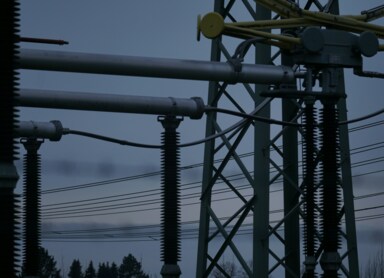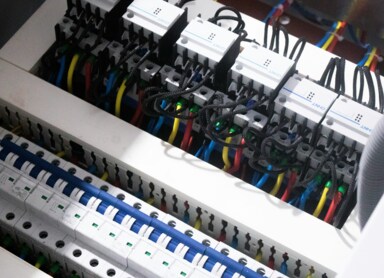Electricity production in Poland – how can the carbon footprint of the energy sector be reduced?
Planning global energy and energy security requires countries to develop so-called energy mixes. This refers to the structure of energy production and consumption, taking into account the energy carriers and methods of generation. For many years, Poland has been known for an energy mix dominated primarily by coal. Are these trends changing? What does the structure of electricity production in Poland look like?
Electricity production in Poland – where does the energy come from?
According to the assumptions of the document establishing the principles of the Polish Energy Policy until 2040 (PEP2040), the global goals for the next 15 years include:
- No more than 56% coal in electricity production by 2030,
- At least 23% renewable energy (RES) in final gross energy consumption by 2030,
- Implementation of nuclear energy by 2033,
- Reduction of GHG emissions by 30% by 2030 (compared to 1990 levels),
- Reduction of primary energy consumption by 23% by 2030 (compared to 2007 forecasts).
These are the assumptions, but what about practice? Comparing the 2023 energy mix with 2024 data reveals clear changes.
Primarily, the amount of electricity produced from coal has decreased significantly. Hard coal production fell from 46.5% to 36.2%, and brown coal dropped from 26.3% to 21.3%. At the same time, the role of gas in Poland’s energy sector has grown, increasing from 5.6% to 10.7%. Most encouraging, however, is the gradual growth in renewable energy use – wind power increased by 3.7% (from 11.5% to 15.2%), and photovoltaic panels by 5.5% (from 5.7% to 11.2%).
It is also worth noting that coal-based electricity production in September of last year reached a historic low, dropping well below 40%. This is a huge success, reflecting both growing end-user awareness and the effectiveness of energy policy.
Current electricity production in Poland – which sources dominate?
Coal still dominates Poland’s electricity system, but the use of wind and solar energy is steadily increasing. According to data from the Polish Power Grid Company (PSE) as of February 2025, Poland’s energy structure looked as follows:
- Hard coal: 48.89% (7,177 GWh)
- Brown coal: 22.67% (3,328 GWh)
- Gas: 11.15% (1,637 GWh)
- Wind energy: 9.66% (1,418 GWh)
- Other renewable energies: 6.33% (929 GWh)
- Hydropower: 1.31% (192 GWh)
Every small photovoltaic installation—whether on-grid, off-grid, or hybrid—contributes to increasing solar electricity production and reducing dependence on non-renewable energy sources. Over time, these small investments can make a huge difference nationwide.
Electricity production from wind turbines in Poland – potential and development
While the solar boom continues, more investors are looking for alternative solutions for local energy, leveraging favorable geographic conditions and large open areas. Wind energy appears to be one of these solutions. Its main advantages include:
- Zero emissions, ecological and renewable energy,
- Low maintenance,
- Low operating costs,
- Simple design, reducing failure risks.
Over the past two decades, wind energy technology in Poland has made tremendous progress. Installed wind power capacity in Poland increased by 15% year-on-year in 2023. The goals are even higher: according to the Polish Wind Energy Association, turbine-based electricity production is expected to reach 18 GW in 2023 and 41.4 GW by 2040, assuming favorable legislative solutions are achieved.
It is also important to note that onshore wind is only part of the picture—offshore wind energy plays a crucial role in Poland’s energy system. It is one of the key investments for energy security and represents the third-largest market in Europe. The entire offshore wind sector in Poland is expected to create 100,000 jobs and reduce CO₂ emissions by 102 million tons annually.
Highest electricity production from wind in Poland – records and outlook
According to December 2023 data from the Energy Regulatory Office (URE), the largest onshore wind capacities are in the Pomeranian, West Pomeranian, and Greater Poland Voivodeships, due to favorable wind conditions: 1,261 MW, 2,436 MW, and 1,466 MW, respectively. In contrast, fewer turbines are installed in southern Poland, where other renewable technologies are more common. For example, in the Lesser Poland Voivodeship two years ago, there were only 9 wind installations with a total capacity of 5 MW.
What was the purpose of the wind act?
The so-called Wind Act, submitted to the Sejm on March 25, 2025, opens new investment opportunities. While the first attempt to amend Polish wind energy regulations was not approved, the proposal contains several solutions that could significantly facilitate wind farm development. Key proposed changes include:
- Minimum distance between a wind turbine and residential buildings: 500 m,
- Possibility to build wind farms 1,500 m from national park boundaries and 500 m from bat habitats and Natura 2000 areas,
- Construction of wind farms based on a special integrated spatial development plan.
How is Poland’s energy mix changing? Trends and forecasts
Although Poland is still far from its target energy mix, the country is evolving. Coal is gradually being replaced by gas and renewable sources. Technologies for storing electricity to reduce waste are increasingly used, and decarbonization of industry—moving away from traditional energy sources toward RES—is also underway.
If you want to take your company on a green path, there are many ways to do it—photovoltaics, wind farms, heat pumps, electric vehicles, or power purchase agreements (PPAs) can make your organization more environmentally friendly. We can help you plan a sustainable future—contact us by email or phone.






